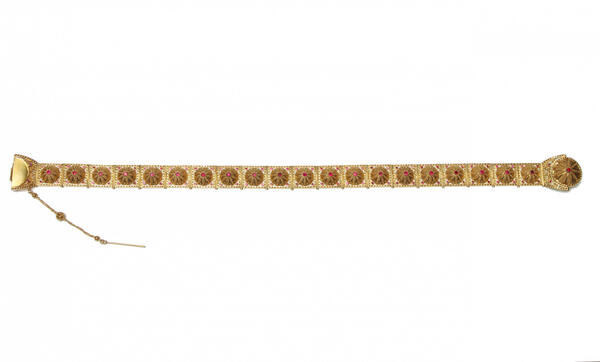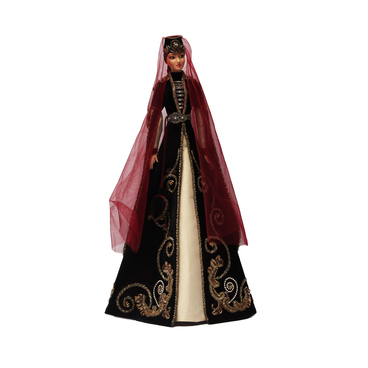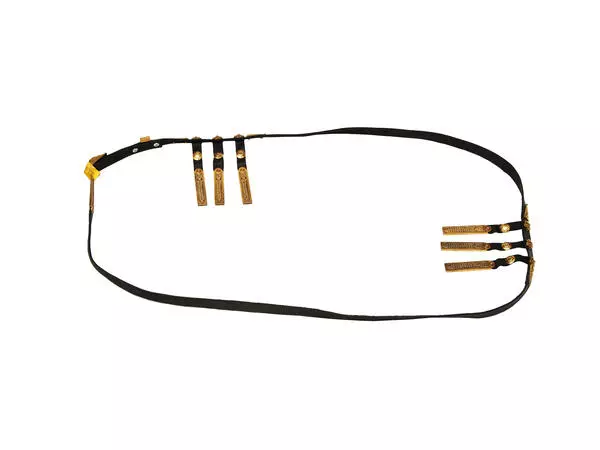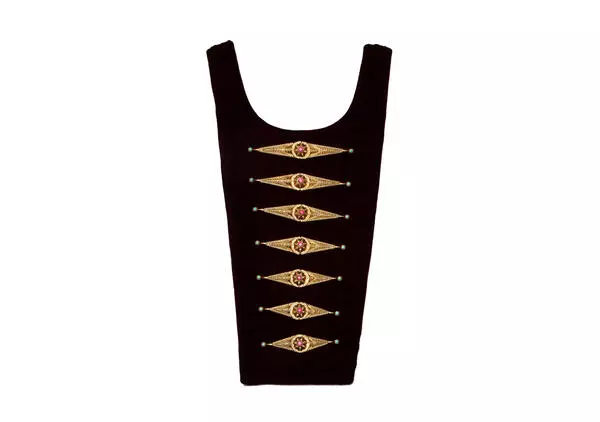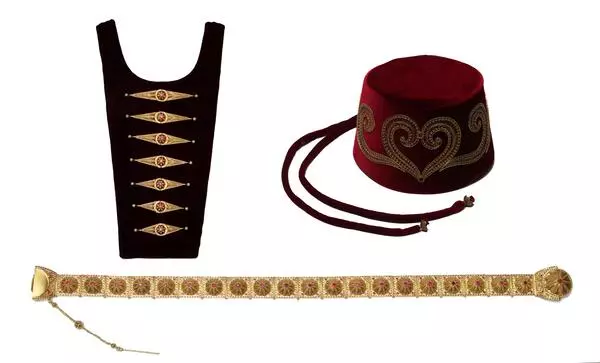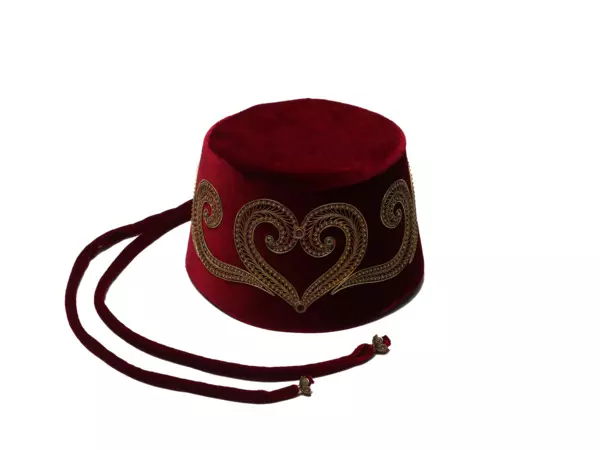Bekhan Dakhkilgov is the most famous jeweler of Ingushetia. He creates weapons, traditional male and female adornments, and household items. He draws inspiration for his artworks from the ancient Ingush art, and enhances the ancient ornaments with his artistic vision. The artist honed his skills for many years studying the techniques used by his predecessors and modern jewelers.
In 1976, Bekhan Dakhkilgov entered the department of artistic metal processing of the North Ossetian Art College. He holds the highest (fifth) class title in woodcarving and became the only Ingush jeweler who has mastered the technique of filigree.
The term ‘filigreen’, or filigree, derives from Latin ‘filum’ meaning ‘thread’ and ‘granum’ — ‘grain’. In this technique, masters create intricate patterns out of thin gold, silver or other metal wire. The artist created this traditional women’s belt using casting and filigree, decorating the silver base with gilding and precious stones — red corundum.
The decorated belt had long been the most important attribute of the wedding dress and always had a lot of precious and semi-precious stones as decorations. Together with the breastplate, made of metal plates-fasteners, they formed an ensemble.
The length of the ancient Ingush belt could not be changed without damaging the garment — it was impossible to remove a detail or add a new one. However, Bekhan Dakhkilgov has improved the traditional design of the wedding set: he joins the links with special fasteners, which, if needed, can be detached with a special small screwdriver. This way, one can insert longer plates into the belt or replace them with shorter ones, changing the length to fit any figure.
The jeweler also said he wanted to create a belt completely in filigree, without the metal plate on the inside, which ancient craftsmen used as a base. Then the intricate ornamentation will be clearly visible. It will look especially delicate and weightless, but at the same time it will be durable. Such belts can be worn by many generations.
In 1976, Bekhan Dakhkilgov entered the department of artistic metal processing of the North Ossetian Art College. He holds the highest (fifth) class title in woodcarving and became the only Ingush jeweler who has mastered the technique of filigree.
The term ‘filigreen’, or filigree, derives from Latin ‘filum’ meaning ‘thread’ and ‘granum’ — ‘grain’. In this technique, masters create intricate patterns out of thin gold, silver or other metal wire. The artist created this traditional women’s belt using casting and filigree, decorating the silver base with gilding and precious stones — red corundum.
The decorated belt had long been the most important attribute of the wedding dress and always had a lot of precious and semi-precious stones as decorations. Together with the breastplate, made of metal plates-fasteners, they formed an ensemble.
The length of the ancient Ingush belt could not be changed without damaging the garment — it was impossible to remove a detail or add a new one. However, Bekhan Dakhkilgov has improved the traditional design of the wedding set: he joins the links with special fasteners, which, if needed, can be detached with a special small screwdriver. This way, one can insert longer plates into the belt or replace them with shorter ones, changing the length to fit any figure.
The jeweler also said he wanted to create a belt completely in filigree, without the metal plate on the inside, which ancient craftsmen used as a base. Then the intricate ornamentation will be clearly visible. It will look especially delicate and weightless, but at the same time it will be durable. Such belts can be worn by many generations.

